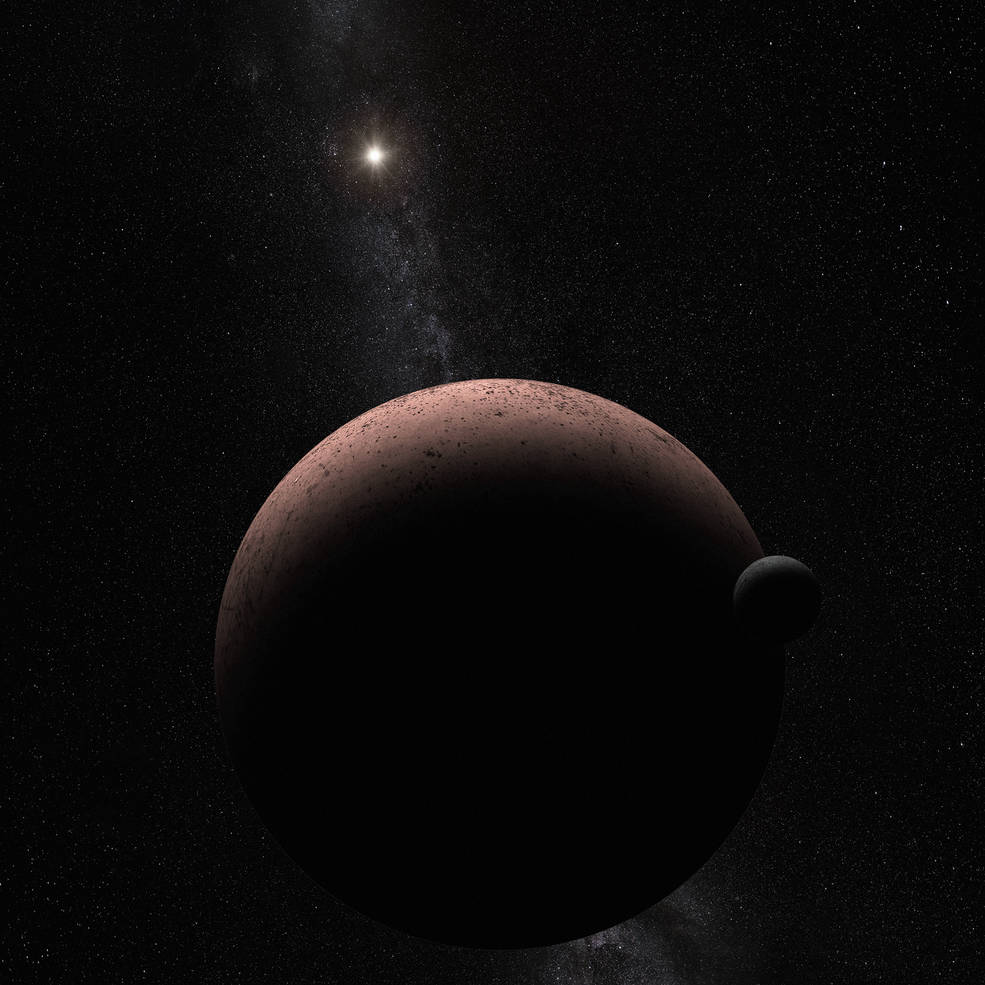2022年12月31日
Moon over Makemake
Illustration Credit: Alex H. Parker (Southwest Research Institute)
Explanation: Makemake (sounds like MAH-kay MAH-kay), second brightest dwarf planet of the Kuiper belt, has a moon. Nicknamed MK2, Makemake’s moon reflects sunlight with a charcoal-dark surface, about 1,300 times fainter than its parent body. Still, in 2016 it was spotted in Hubble Space Telescope observations intended to search for faint companions with the same technique used to find the small satellites of Pluto. Just as for Pluto and its satellites, further observations of Makemake and orbiting moon will measure the system’s mass and density and allow a broader understanding of the distant worlds. About 160 kilometers (100 miles) across compared to Makemake’s 1,400 kilometer diameter, MK2’s relative size and contrast are shown in this artist’s vision. An imagined scene of an unexplored frontier of the Solar System, it looks back from a spacecraft’s vantage as the dim Sun shines along the Milky Way. Of course, the Sun is over 50 times farther from Makemake than it is from planet Earth.
Tomorrow’s picture: planet Earth
鸟神星与卫星
图标提供: Alex H. Parker (Southwest Research Institute)
说明: 柯伊伯带第二亮的矮行星─鸟神星(Makemake;读音为MAH-kay MAH-kay)拥有一颗卫星。这颗昵称为MK2的鸟神星卫星,以煤炭般漆黑的表面反射阳光,比母行星大约要暗上1,300倍。话虽如此,哈勃太空望远镜专为发现昏暗伴星所进行的观测还是找到了它;相同的技术,也曾用于寻找冥王星的小卫星。而且也如同冥王星和它的卫星一般,针对鸟神星和它的卫星所进行的后续观测,将会测得这个行星系统的质量和密度,让我们对这个遥远的世界有更多的了解。宽度约160公里的Mk2和直径1,400公里的鸟神星之相对大小与色泽对比,就如上面这幅以太空船视角回望在银河中绽放光芒的暗淡太阳之艺术家图标所呈现。鸟神星与太阳的间距,大约是太阳与地球距离的50倍。
明日的图片: planet Earth



